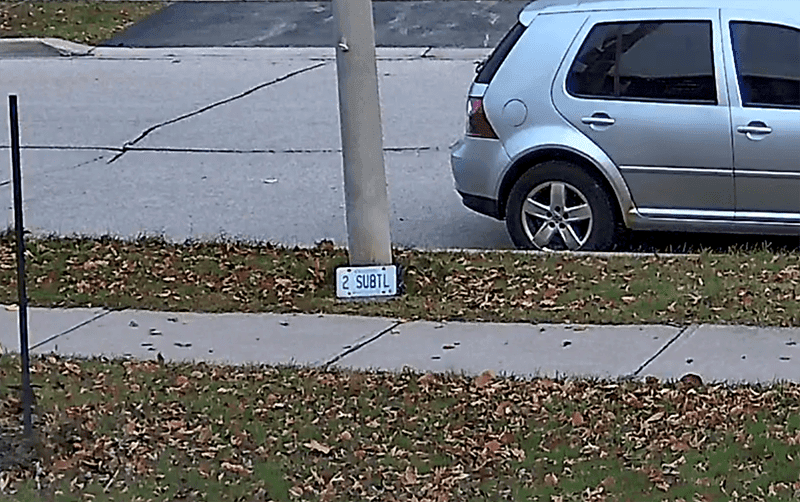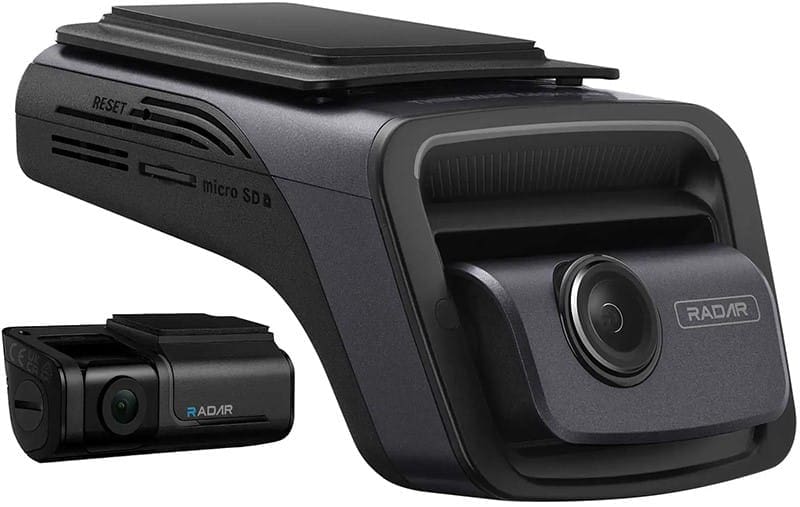We saw a recent online discussion about what features of a dash camera improve the ability to accurately capture vehicle license plate information. The goal of the discussion was to help readers understand what features to look for when picking a camera. Sadly, the information provided demonstrated a fundamental misunderstanding of how photography and videography work. So, as we do, let’s explain how cameras capture images and what features improve sharpness.
Digital Image Creation
A digital image is any array group of color elements called pixels. Each pixel is assigned a specific color. If all the pixels in an image are white, you see a white screen when viewing the file. Pixel colors typically combine different levels of red, green, and blue. From these three base colors, we can represent all the colors of a rainbow.
We define quality images by their size—specifically, the number of pixels in the image. More pixels equate to more detail. If you tried photographing someone or something with an ancient, low-quality digital camera, you’d see larger blocks of each color rather than a smooth gradient.


What Is a Video File?
Watching a video is just watching a stream of pictures played back in quick succession. Objects moving across the screen are just images with the objects in different locations.
How Video Works – Resolution
When it comes to video files, we have many common resolution options. Standard definition (SD) video has 720 columns and 480 rows of pixels, for a total of 345,600. Moving up, we have 720p high resolution, which has 1280 by 720 pixels, for a total of 921,600. Most basic dash cameras are listed as Full HD or Full High Definition. These have a 1920 by 1080 resolution, for a total of 2,073,600 pixels.
Several higher resolutions are available. Quad HD, also called 2K, has 2560 by 1440 pixels and 3,686,400 pixels. The new standard for high-quality dash cameras is 4K Ultra HD. These image sensors have 3840 horizontal columns and 2160 rows for a mind-boggling 8,294,400 pixels.
What matters here is detail. The image size doesn’t change, as the lens shape controls that. What does change is the detail in the image that’s captured. Assuming all other factors are equal, more pixels make each pixel smaller, allowing for more resolution.
Image Resolution Example
The images below are stills taken from the security camera at one of our team members’ homes. They put their old license plate out by the light post in the neighbor’s yard and then experimented with the camera settings to capture some sample images.


Having enough pixels to draw each character on a license plate is crucial. Of course, the above example is a bit extreme. Nevertheless, it makes the difference easy to see.

Interestingly, we pushed this video camera to an even higher resolution of 3840 by 2160 pixels. The image quality decreased.
Why wasn’t the image as clear? It could be a bandwidth issue, or the image sensor isn’t a genuine 4K unit. Actual testing and comparison of cameras is often the only way to get accurate performance information. Wow, that sounds just like an audio component!
If the object you hope to capture isn’t moving relative to your vehicle, then resolution will be the primary factor in determining legibility.
Image Exposure Considerations
When a camera takes a photo, it must balance two factors to capture enough light—aperture and exposure. The aperture describes the effective size of the shutter opening. A small number, like f1.8, allows more light from the object to reach the sensor than f2.0 or f2.8. With more light, the shutter doesn’t need to be open as long. A shorter shutter speed dramatically improves image quality when an object is moving.
Exposure times are usually measured in fractions of a second for regular photo and video cameras. Some high-end film cameras use degrees of a circle. We won’t delve into a discussion of the latter here. If you want to take a picture of a Formula One car passing you at high speed and have it be sharp, you want a very short exposure. 1/1000 of a second is a good starting point. If you want to capture a waterfall and have the water appear to be flowing, then a long exposure of 1/15 of a second is good.
Short exposure times, crucial to capturing fast-moving objects, require a wide aperture. Long exposures are typically associated with very small aperture settings. These settings are adjusted automatically in dash cameras, point-and-shoot cameras, and most smartphones.
Here are three pictures of a truck wheel taken with a wide-aperture lens on a digital SLR camera.



As the aperture opening decreased in size from f4 to f8, the camera needed to extend the time the shutter was sampling. With a 1/400-second exposure, the truck tire’s white sticker is slightly blurry. Likewise, you can make out the ten lug nuts. Stepping up to 1/200 second, the white sticker is 50% longer, and the lug nuts are getting blurry. At 1/60 second, all the details are getting blurry.
While a car or truck’s license plate isn’t spinning as quickly as this truck wheel, the same concept applies. You may only have a dozen or so frames in which a license plate is large enough in an image to be legible. Stopping motion or freezing objects relies on exposure time and aperture.
Video Frame Rate
As mentioned, a video from a camera is nothing more than a series of single photographs. Most dash cameras take 25 to 30 pictures per second. When these are played back in a steady stream, we perceive it as video.
Frame rates can vary a great deal. Most 1080p YouTube videos play back at 24 frames per second. Some content creators use a higher frame rate of 60 frames per second. The latter could result in a smoother image.
Frame rate matters a bit in capturing something like a license plate. If the vehicle is moving, a camera with a higher frame rate is likely to capture more images of the license plate. However, if the camera resolution isn’t good or the effective shutter speed is long, all this means is that you’ll get a lot of blurry images instead of a few sharp ones.
Picking the Best Dash Camera for License Plate Capture
There’s no single factor that makes one camera better than another when it comes to capturing a clear image of a license plate. For example, a dash camera with a very wide field of view results in each pixel covering more area. As such, fewer pixels might be available to capture a license plate as a car or truck passes by.


A combination of a wide-aperture lens, excellent image sensor sensitivity, good noise rejection, not too broad of a field of view, and lots of resolution is your best bet for getting good license plate information. However, many dash camera companies lack details about their specifications. You may want to see samples of videos from cameras a local specialty mobile enhancement retailer suggests before making a purchase. Even if you don’t catch a license plate, having a high-quality dash camera in your vehicle is a wise investment. You never know what’s going to happen.

